Coronavirus: Intensive care night shift in pictures
- Published
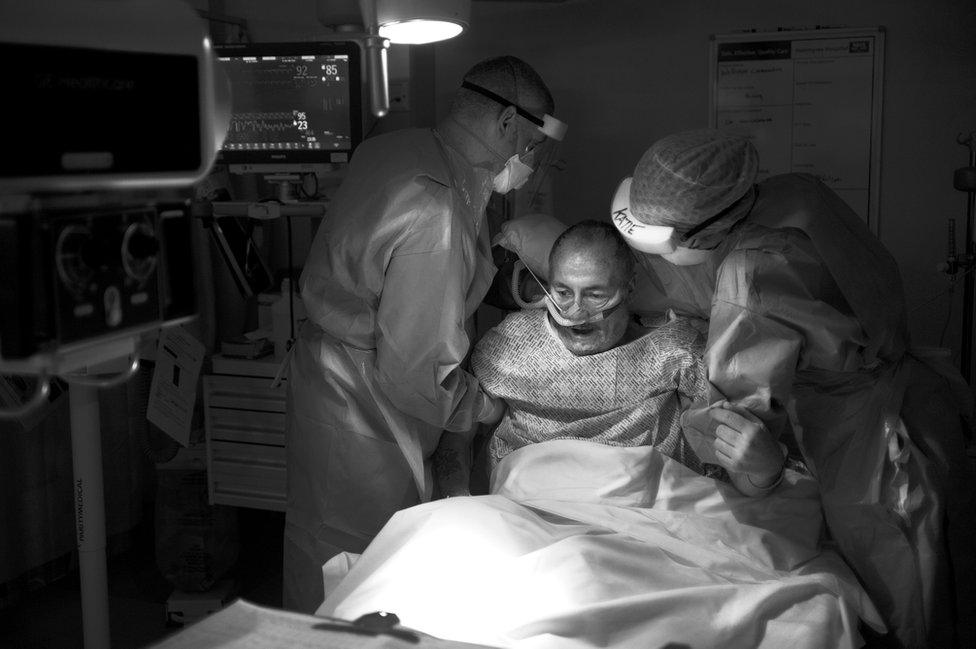
A Covid-19 patient is lifted by in the ICU team, in preparation for a chest X-ray. He was one of five patients requiring extensive 24-hour care throughout the night.
Intensive care units are on the frontline of the coronavirus pandemic, working to keep the most seriously ill patients alive.
Access into these units is extremely restricted, but I was allowed to spend a 12-hour shift with the overnight ICU team at Hairmyres Hospital in East Kilbride.
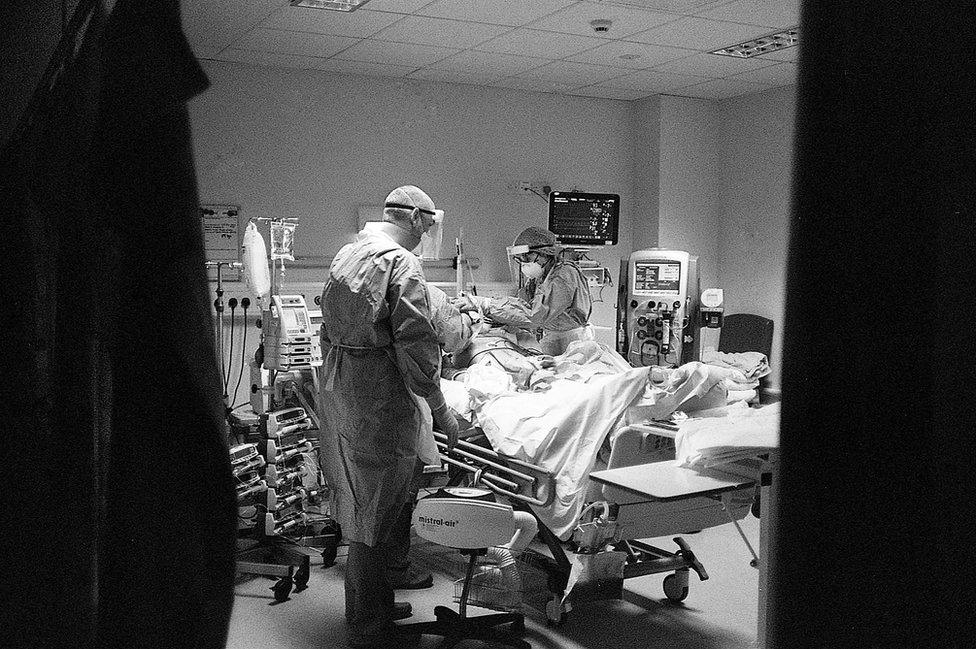
Hairmyres Hospital normally has one intensive care unit, but now there are two Covid wards and two ICU areas for Covid patients.
The primary ICU has been running at 240% capacity for most of the Covid crisis, and its equipped to flex up to 400%.

Dr Austin Rattray leads the overnight ICU team of 30 nursing staff and clinical support workers, three consultants and two junior doctors.
"It's been incredibly difficult for families not to be able to be with their loved ones, and for patients not to have the direct support of their families. That's been one of the hardest aspect of this," he says.
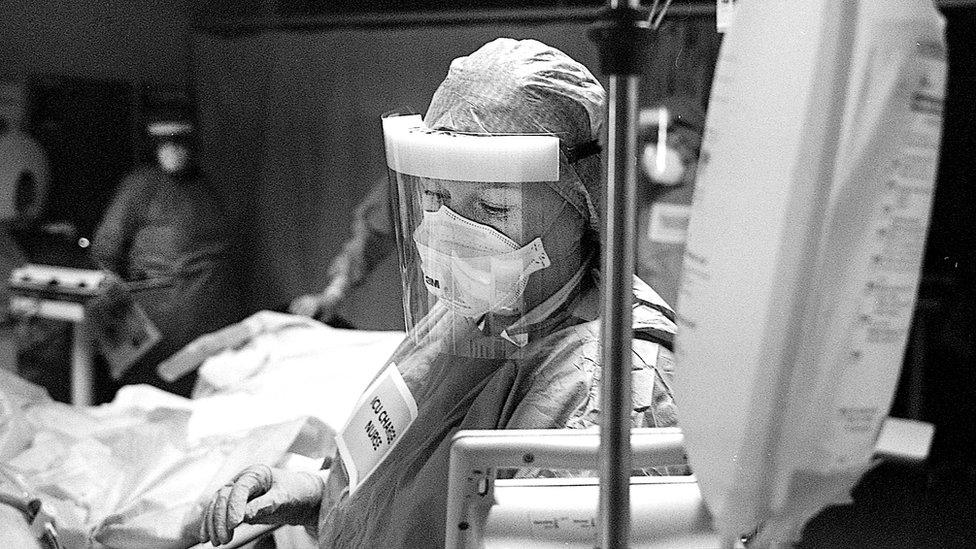
ICU charge nurse Morag Malcom monitors the breathing of a patient.
She usually works in the unit, but many of her current colleagues are not normally part of the ICU team. They have been quickly retrained from other departments to fill staffing shortages brought on by the pandemic.
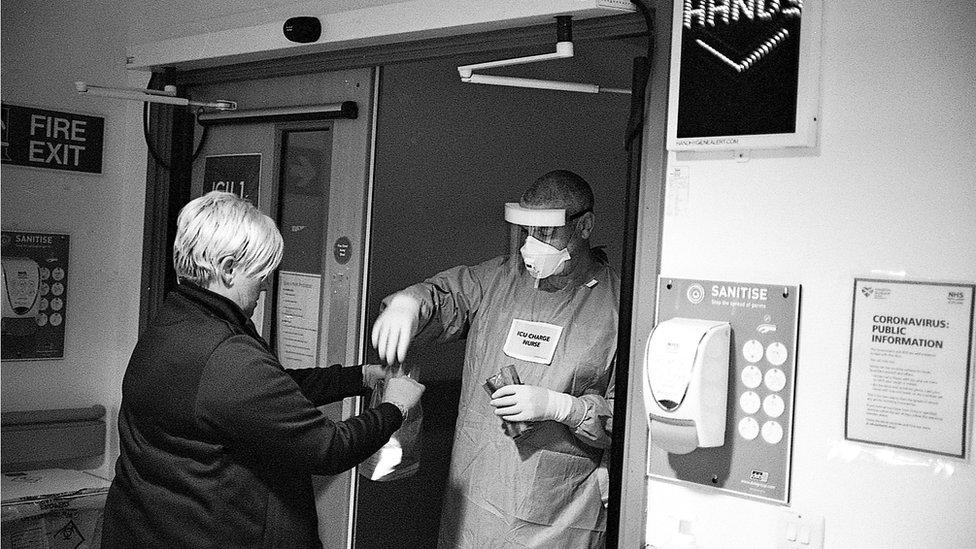
Each night blood samples are taken from all Covid-19 patients to test for the presence of the virus. Samples are passed from the strictly sanitised ICU to staff waiting outside.
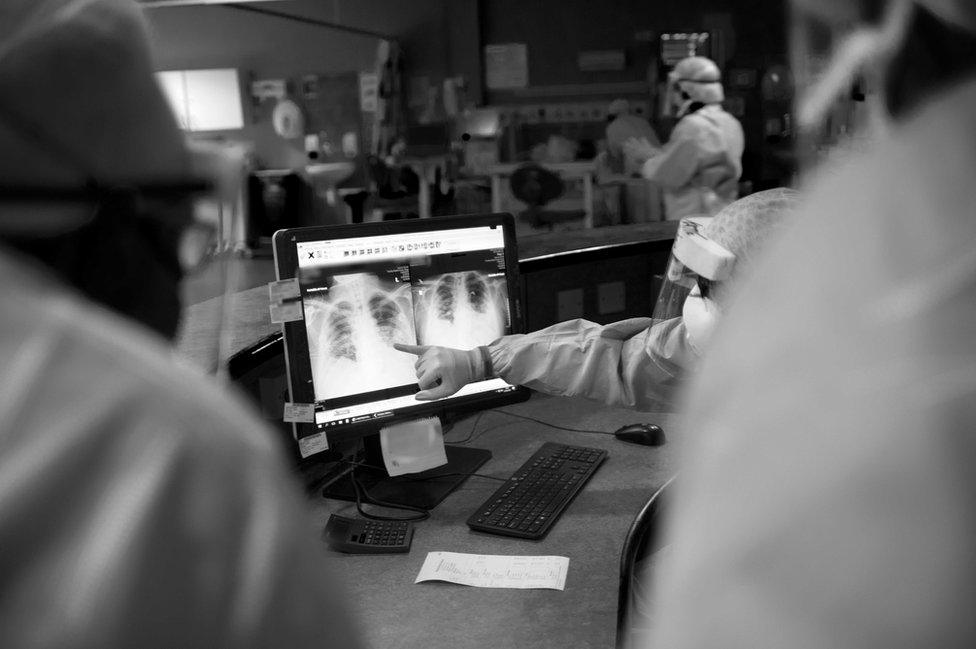
A patient's X-ray is examined for fluid, to help decide if they can be taken off a ventilator.
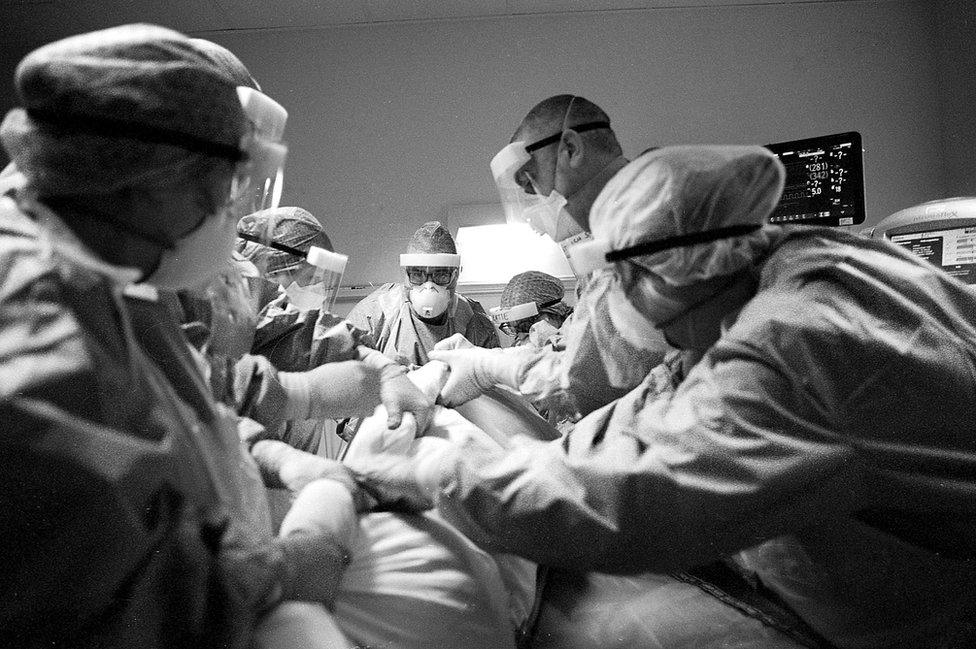
Dr Rattray directs a team of six nurses to help him "prone" a patient whose oxygen levels suddenly dropped dangerously low, turning the patient on to their front side to ease breathing.
"We're at the point that there's really nothing else we can do," he explains.
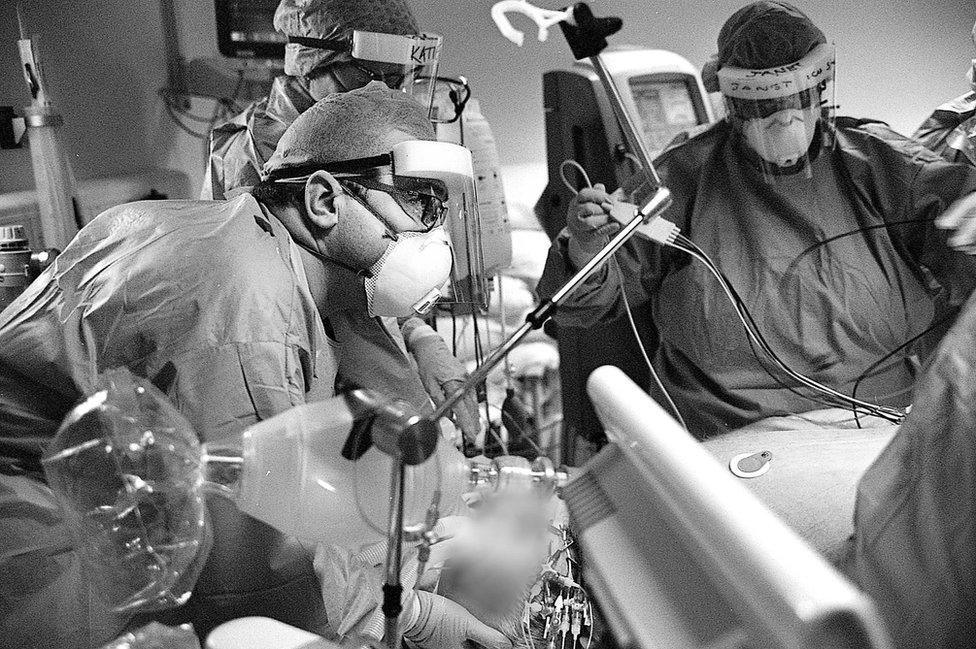
"Normally in the ICU we like our patents sedated but alert, but here the patients need to be in an induced coma," says Dr Rattray.
"But it's about risk management and this is what we need to do to keep him alive tonight."
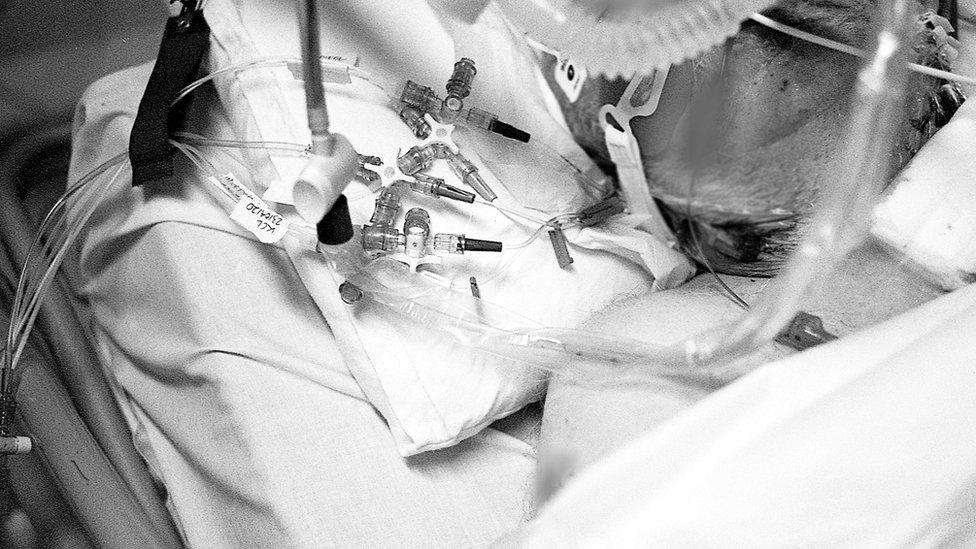
One Covid-19 patient has been dependent on a ventilator for 23 days.
"Our understanding of the disease is rapidly progressing," says Dr Rattray. There's been remarkable local, national and international sharing of information which has allowed us to learn rapidly from each other, and prepare for whatever's next."
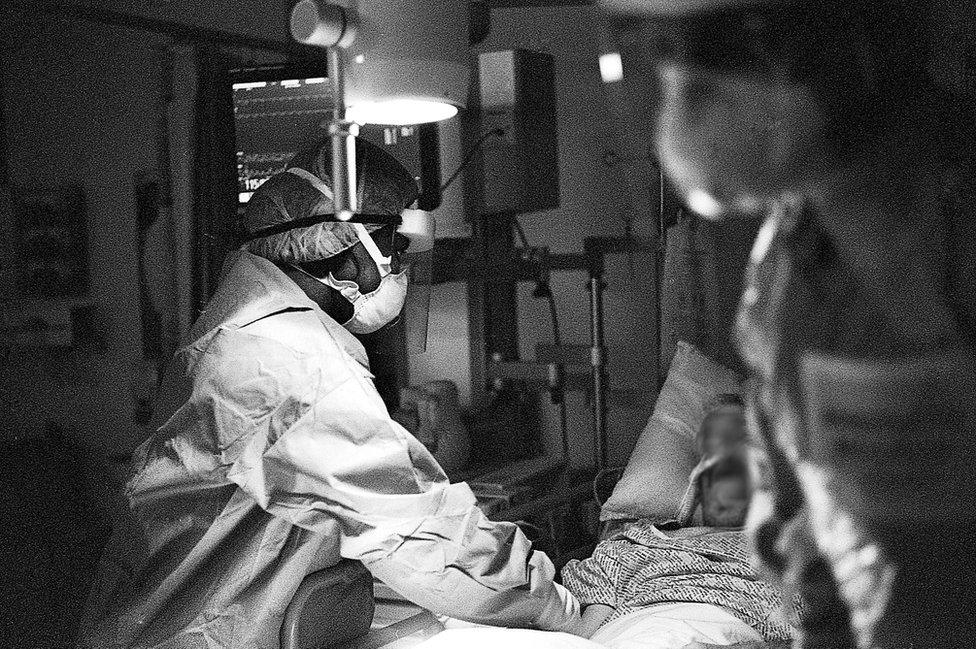
A nurse tends to a patient recently removed from a ventilator. Strict isolation is in place to limit the spread of the virus, meaning families are not permitted into the ICU for visits.
"We know it's heartbreaking for the families not to see their loved ones who are so sick, but there's one nurse with each patient at all times, they are never left alone for one moment," explains charge nurse Morag Malcom.
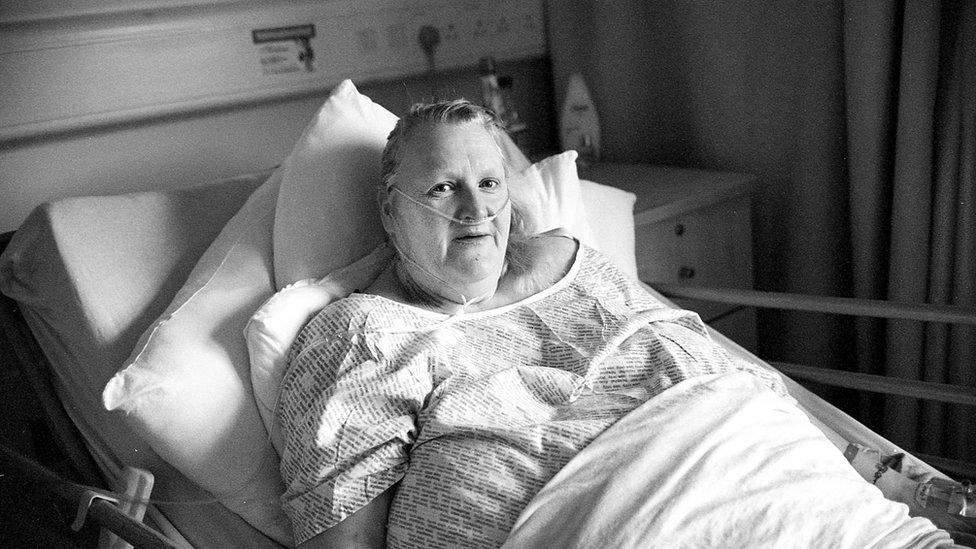
Covid-19 patient Lynn Plunkett is recovering after time spent in the ICU.
She says: "The doctor asked me if I should be resuscitated if needed. I said you keep me alive no matter what. I have my first grandson being born in two weeks and I need to meet him. You keep me alive no matter what."
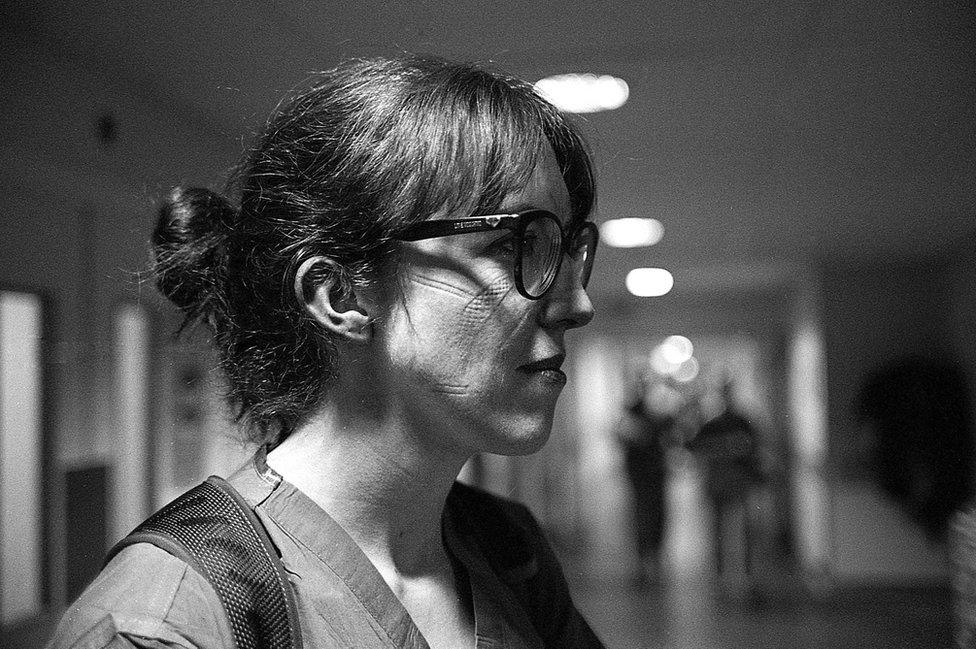
Anaesthetic trainee Katie Maguire, showing the marks left by her face mask after a 12-hour shift. She does not normally work in intensive care, but has been drafted in during the pandemic.
All images by Christopher Bobyn.